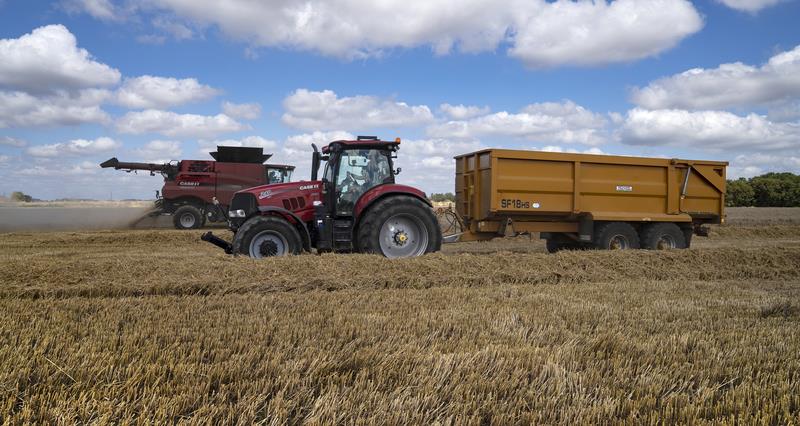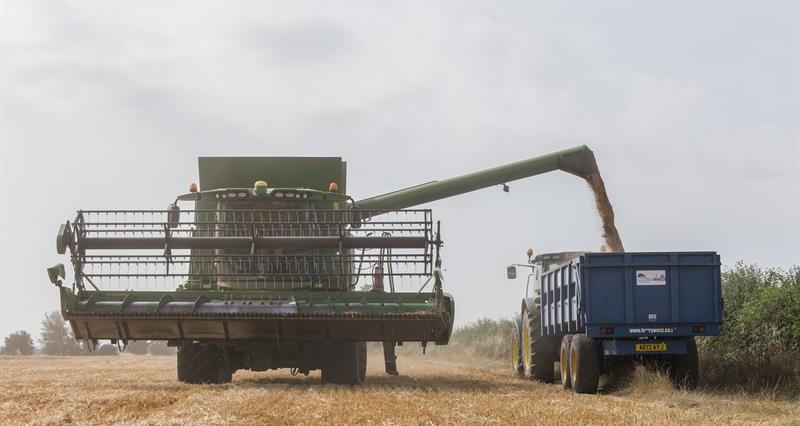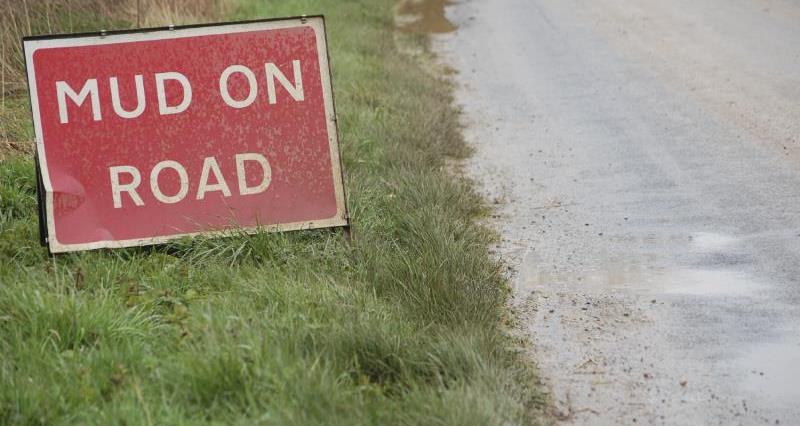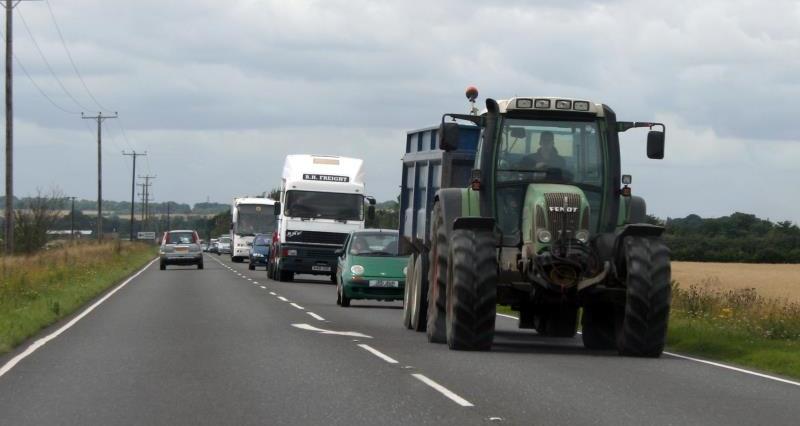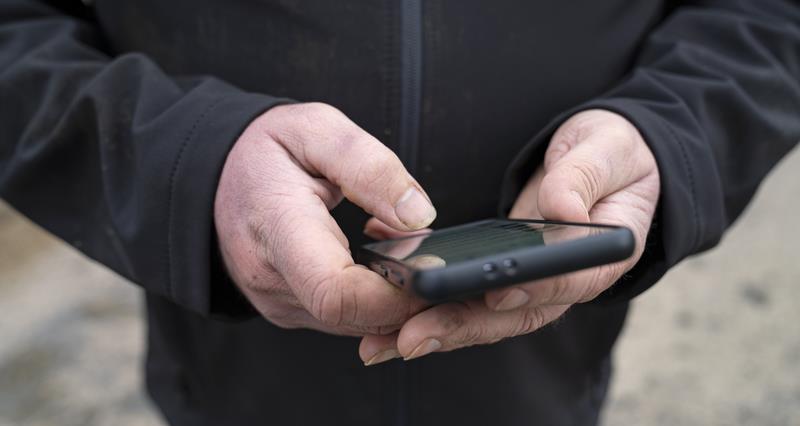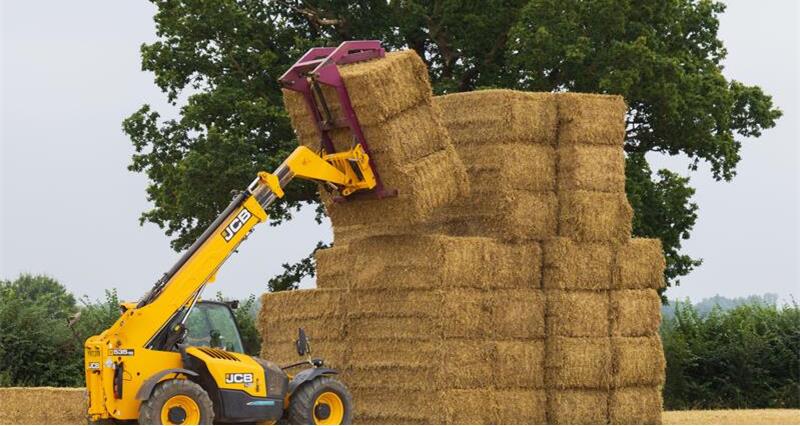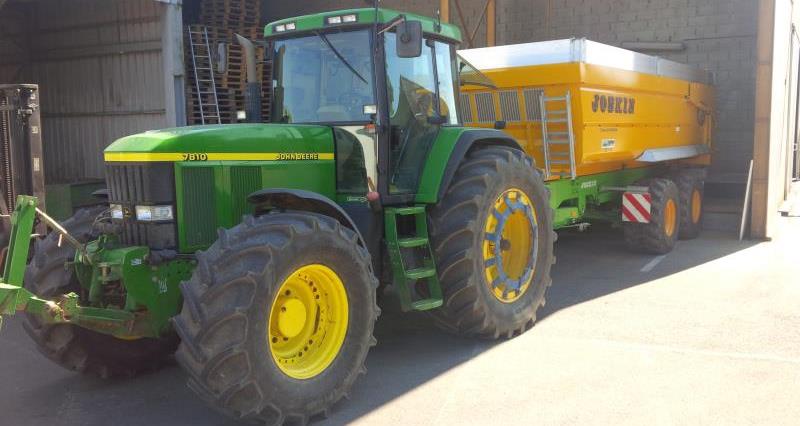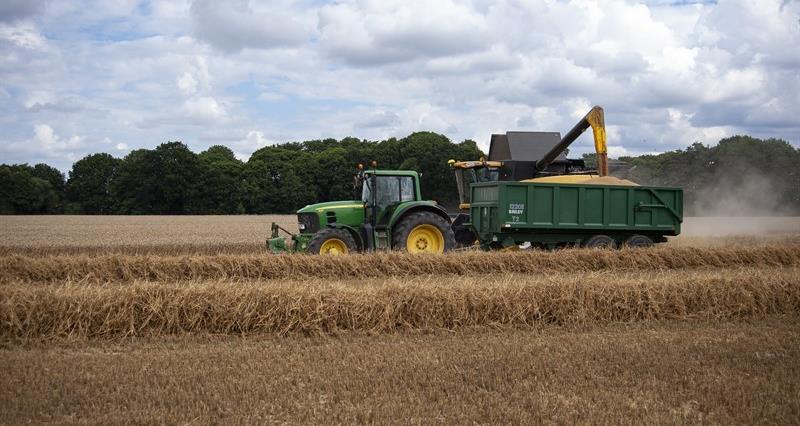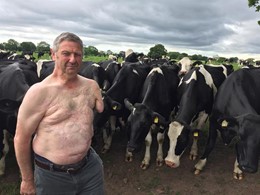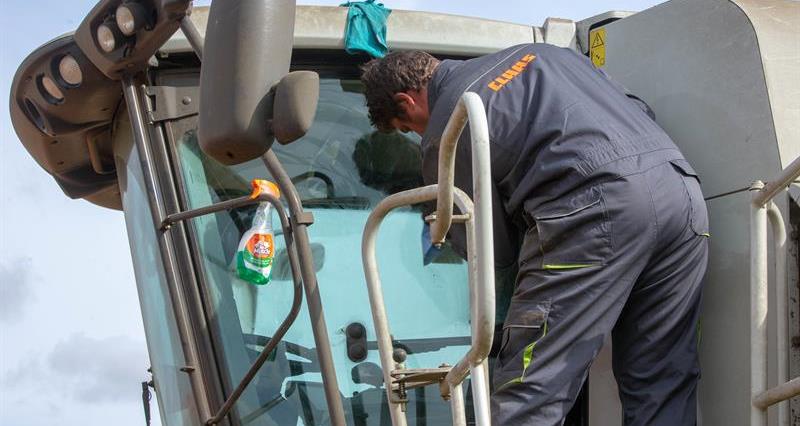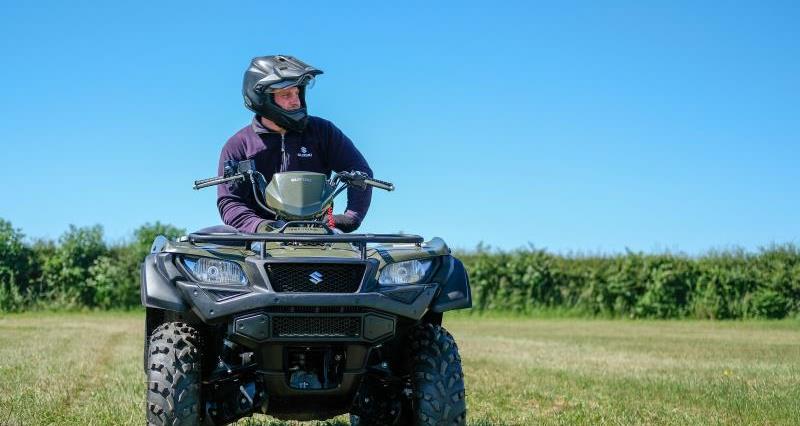Incidents involving moving vehicles and farm machinery are a major cause of workplace deaths and life changing injuries in agriculture. Moving vehicles account for approximately one third of the deaths each year in farming, while machinery related incidents account for around 1 in 10 fatalities each year. Every year hundreds of people are injured by farm vehicles and machinery.
Your legal obligations
There are several UK laws that warrant consideration when thinking about safety on farm:
The Health and Safety at Work Act 1974 requires all employers to ensure, so far as is reasonably practicable, the health, safety, and welfare of all their employees.
PUWER (The Provision and Use of Work Equipment Regulations) 1998 apply to any equipment and machinery that you use at work. It states that equipment must be suitable for the task, properly maintained and guarded and that adequate training and information about the equipment is available for employees.
The LOLER (Lifting Operations and Lifting Equipment Regulations) 1998 also apply to any lifting equipment, for example, a telehandler. It states that equipment must be strong and stable enough for its proposed use, marked to indicate safe working loads, positioned, and installed to minimise any risks, used as part of a planned operation, and subjected to ongoing thorough examination at suitable intervals by a competent person. It is mandatory to have equipment used to lift people inspected by a competent person every six months.
The PACAR (Prevention of Accidents to Children in Agriculture Regulations 1998) makes it illegal to allow a child under 13 to ride on or drive agricultural self-propelled machines (such as tractors) and certain other farm machinery.
On the road
Specific legislation applies to vehicles travelling on public highways. However, as more farming transport accidents occur off-road than on, the HSE (Health and Safety Executive) applies the same standards and principles for off-road travel as the DVSA (Driver and Vehicle Standards Agency) and the police do for on-road travel. Points to consider:
- The maximum legal road speed for a tractor under 2.55m wide is 40 km/h (approx. 25 mph).
- The maximum legal road speed for a tractor 2.55m wide and over is 32km/h (approx. 20 mph).
- Only high specification tractors are legally able to travel over 40 km/h.
- The maximum weight of a laden tractor-trailer combination on the road is 31 tonnes and in that combination of 31 tonnes a laden trailer can be no more than 18.29t.
- All trailers over 750kg require brakes. If towed above 40 km/h they should have high speed (commercial) brakes with a mechanism to apply the trailer brakes in the event the trailer accidentally detaches.
- You must protect and mark all sharp or dangerous edges and cover or remove attachments on material handlers for road use.
Driving tips
It is your legal responsibility to ensure that your employees are adequately trained and competent to use machinery. Lantra offers a wide range of training courses focused on efficient and safe operation of machinery and equipment.
Passengers should only ride in cabs if they can sit in a safe position on a seat which doesn’t interfere with the operation of the machine, and it is illegal to allow a child under 13 to ride on or drive any agricultural vehicle. To avoid overturns always turn uphill and if spreading things like fertiliser remember that as the load gets lighter there will be less grip on the rear wheels.
See: What's the law on children driving agricultural machines?
Make the most of your mobile phone
Keep your mobile phone in reach at all times in case of emergency, but do not use it whilst driving.
Emergency SOS and voice activated features can be invaluable in contacting the emergency services quickly in dangerous and life-threatening situations, as well as automatically alerting pre-selected contacts.
- If you work alone, make sure someone knows where you will be working and when you are expected back. It’s good practice for all staff to report in at the end of the day.
- Consider using live location sharing apps such as Friend Finder (iOS), Google Maps (iOS and Android) or WhatsApp (iOS and Android) if you or your employees are lone workers and working across a large geographical area.
Reduce the risk of injury if you overturn
- Wear your seatbelt; this is a legal requirement where there is a risk of overturning and mandatory when driving on road.
- Stay in the cab and do not try to jump clear, this is one of the most common causes of death.
- Keep the cab tidy and make sure there are no large or loose items in the cab.
- Do not remove windows or doors from a safety cab and regularly inspect the structure to make sure it is in a good condition.
Lifting operations
Lift trucks are involved in a quarter of all workplace transport activities, but they can be dangerous if not used properly. Remembering to remove the keys from any machinery is one of the simplest ways that you can prevent death and serious injury to untrained and inexperienced people.
Experienced operators still face risks if they are don’t use lifting equipment properly. Grain buckets, pallets, or other makeshift equipment should never be used to lift people off the ground. Additionally, people are regularly injured and killed from using lifting equipment over its capacity, so it’s crucial to adhere to the safe working loads, which are marked on lifting equipment, and to make sure overload indicators work and aren’t ignored.
Falling objects also pose a risk to anyone near or operating lifting machinery. You can reduce the risks by making sure all loads that are carried are stable and secure. Good cab protection is essential for materials handlers and loaders as they are far more likely to be hit by any falling objects.
Buying and hiring machinery
When hiring machinery or buying new equipment, check:
- The machine is UKCA conformity marked, or CE marked and supplied with a Certificate of Conformity.
- The machine is fitted with roll-over protection.
- The machine will clear under any overhead powerlines.
- That operators have been trained to use the new machine safely.
- That any second-hand equipment complies with PUWER requirements and has guards in place when buying. If not, you must bring it up to a safe standard and replace or repair guards before you use it.
- keep guards in place.
- switch machinery off when not in use and remove the key.
- train staff how to use the equipment efficiently and safely.
PTO (power take-off) shafts must be guarded at all times. Guards should be made to a recognised standard (such as BS EN ISO 5674:2009), must be the correct size and length for the shaft, and not rotate.
PTO covers should fit snugly to the shaft, there should be very minimal movement of the cover around the shaft. If you need regular access to a guarded dangerous part of a machine, check that interlocking safeguards are in position and that the machine cannot run when a guard is open.
Many preventable incidents causing death and serious injury occur when drivers leave vehicles or machines without making sure it is fully secured and will not move. Follow the Safe Stop procedure every time you leave the driver’s seat/operating position and especially before maintenance is carried out:
- Handbrake on.
- Controls in neutral.
- Engine off.
- Key out.
“I lay in the field in shock. What was left of my arm was hanging on by a piece of skin.”
NFU member Kit Hopley, who lost his arm in a PTO shaft accident
Pressurised equipment
Any plant or equipment under pressure, such as slurry tankers, boilers, compressors and even tyres can burst open violently. Equipment with a rating greater than 250 bar litres requires a written scheme of examination and regular inspection under The Pressure Systems Safety Regulations 2000.
To remain safe:
- Make sure equipment is fit for purpose, used properly, and maintained.
- Know the safe working pressures and temperatures for equipment.
- Fit safety valves to relieve excess pressure.
- Pressure test pipes and tanks hydraulically rather than with air.
- Use a tyre cage when inflating large tyres.
- Never weld or heat wheel rims unless you have removed the tyres.
Safe maintenance
Tidy farm workshops create safer working environments for your employees. Consider how simple improvements to lighting, ventilation and heating could enhance the working environment.
Follow the Safe Stop procedure before attempting any maintenance work on a machine:
- Chock the wheels and apply the brakes.
- Disconnect the battery before starting work.
- Prop raised bodies properly - do not rely on hydraulic systems alone for support.
- Use axle stands and never work under vehicles supported on jacks alone.
- Wear appropriate protective clothing and equipment if necessary.

‘We need to think about the job in front of us to make it safer’
Lincolnshire farmer Mark Poucher shares his story on how, within a second, he found his hand trapped in machinery:
“To set the scene, it was a Friday evening at 7pm, I had the weekend off and was thinking about all the things 26-year-old me was going to be doing that weekend.
“In a split second, my weekend plans changed completely.
“My left hand was pulled into some moving machinery, resulting in a crush injury to my hand. I didn’t realise at the time, but the prognosis was a crushed carpel tunnel and a broken radius close to my wrist.”
Site safety
Every year people die from being run over in farmyards. Many of these accidents involve older people and semi-retired farmers who fall and cannot move out of the way quickly enough and tragically children, who may not anticipate what a vehicle will do next.
With modern cabs, you may not be aware they are there until it is too late. Make sure everyone working on the farm stops operations if children appear and ensures they are relocated to a safe, secure area.
Ensure children are supervised at all times, and kept away from high risk areas such as machinery and livestock. No-one under 13 years old should be using agricultural machinery.
Accidents involving pedestrians can be avoided by creating separate routes for pedestrians and vehicles. This is particularly important for delivery drivers and sales reps that may not be familiar with your machinery movements.
Improve visibility on your farm by always using reversing cameras and request that all workers and visitors to the farm wear hi-vis clothing. Think about general site visibility and how you can improve safety with lights and signs. Visiting drivers should be made aware of things like where to park and if there are one-way systems in operation. Signs can help with this, as well as issuing clear delivery instructions when ordering products.
Stay safe when using ATVs
Incidents with quad bikes and ATVs are one of the leading causes of transport and machinery related fatalities within agriculture. Everyone riding a quad bike must wear a suitable helmet as they help prevent head injuries, which are the most common cause of death.
Under PUWER, anyone using a quad bike for work purposes needs to complete appropriate training.
